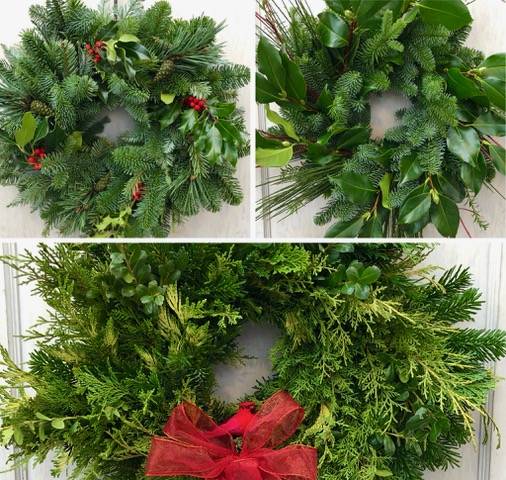By Steve Smith
I think it is fair to say that most of us are not going to be spending a whole lot of time in our gardens this month, but that doesn’t mean we can’t still find ways to stay connected to them. Making winter arrangements from the bounty of our yards (or someone else’s, with permission of course) is a perfect way to extend the bond between plants and people that is so essential to our well-being.
When I gaze upon an arrangement of dried flower stalks and evergreens from my garden, I don’t see death and the end of a season, but rather am transported back to spring and summer when those seed heads were colorful flowers covered with bees, birds and delicious fragrances. I also see new hope in the very seeds on those dried flower stalks, seeds that will bring forth the next generation of flowers in my garden. It’s an uplifting feeling that helps me get through the dark days of winter.
While combining some evergreen boughs and dried flower stalks into an empty container and placing them on the deck is a simple and easy way to experience the garden this time of year, some of us prefer to go the extra mile and build something a bit more complex. An example is the art of wreath making. What started out as an attempt to generate some revenue for the garden center in the slow season has evolved into an annual event celebrating the incredible diversity of plants that live in our Northwest gardens. This time of year my staff heads out to collect as wide a variety as possible of evergreens, twigs, berries and dried flower stalks for customers to use to make their wreaths, for which we have classes every Saturday until Dec. 16. Evergreens, such as pine, spruce, cryptomeria, cedar, cypress, sequoia, yew, juniper, and thujopsis, can all be found growing in our local landscapes. Broadleaf evergreens, like English and Japanese holly, Evergreen Huckleberry, and Box-leaf Honeysuckle, also provide nice accents. Dried flowers and seed heads, such as Siberian iris, statice, yarrow, hydrangeas, golden hops vine, Dock, native Spiraea, teasel, and cat tails, can add further visual interest. Even a noxious weed like Scotch Broom offers a unique texture to a holiday wreath.
Once all of the plant material has been collected and cut into appropriate-sized pieces, it is time to assemble it into a unique creation. With the wreath machines and wire forms we use today, it is so easy that you will amaze yourself with your creativity. I have as much fun watching customers make wreaths as they do making them. I’ve seen wild and wooly ones with curly willow twigs shooting out like bottle rockets and fuzzy buds from the stag horn sumac nestled in amongst the greenery like sleeping elk. Conversely, some folks like to make their wreaths nice and tidy with perfect symmetry, clean and crisp edges with just a subtle accent of cones. Possibly the hardest thing to do is to decide what not to put in a wreath. While using one of everything may prove a bit chaotic, there is always enough variety to pick a theme of say golds and yellows or just blues and silvers. Wreath making is a chance to re-purpose our plants and give them one more time in the spotlight before they are relegated to the compost heap. It’s also an opportunity to spend some quality time with family and friends and build a tradition that will last for years.
Steve Smith is owner of Sunnyside Nursery in Marysville and can be reached at info@sunnysidenursery.net


